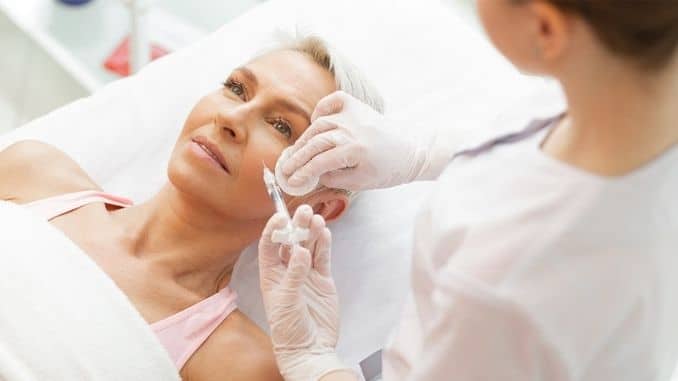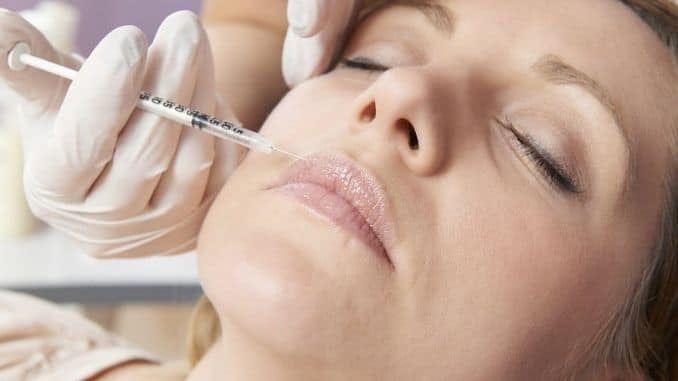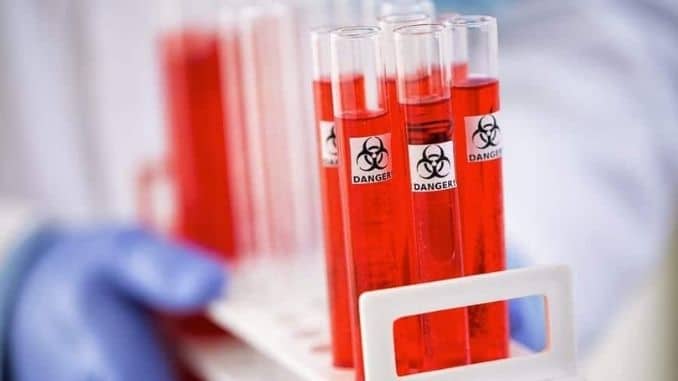
How far back in history did humans first use surgery to change the body? The 1900s? 1800s? As early as 3000 B.C., ancient Egyptians wrote on papyrus about fixing a broken nose using plastic surgery techniques. Many centuries later, silicone gel implants appeared as well as the great controversy surrounding them.
More recently, doctors use BOTOX and fillers to modify the body’s appearance. How great is the risk behind these procedures? Will Botox become as infamous as silicone one day? Let’s take a look.
Breast Implant History
As far back as the late 1800s, surgeons used breast implants to modify the shape, size and feel of a woman’s breasts. In 1895, surgeon Vincenz Czerny completed the earliest breast implant successfully. He used the patient’s own fat tissue, which he took from a collection of benign fat (lipoma) from the person’s back. The reason Czerny did the surgery was to restore the appearance of a breast from which he had removed a tumor.
Later, surgeons tried a wide variety of other substances for breast augmentation or reconstruction. Some of the material used included ivory, glass balls, ground rubber, ox cartilage, Terylene wool, gutta-percha, polyethylene chips, polyether foam sponge, polyethylene tape strips wound into a ball, polyester silastic rubber, and Teflon-silicone.
Today, there are two types of breast implants:
- Saline implant filled with a sterile saline solution
- Silicone implant filled with viscous silicone gel
Silicone Controversy
When silicone implants were first introduced, the United States Food and Drug Administration (FDA) requirements were much less strict. In 1992, after safety concerns arose, the implants were taken off the market pending further investigation. Some of the more serious adverse side effects of silicone breast implants reported were:
- Breastfeeding difficulties
- Breast pain
- Calcium build-up in breast tissue (calcification)
- Hardening of the breast around the implant
- Chest deformity
- Leaking or ruptured implant
- Delayed wound healing
- Extrusion (implant breaks through the skin)
- Hematoma
- Surgical infection, including toxic shock syndrome
- Necrosis (dead skin or tissue around the breast)
- Irritation, redness, bruises, and scars
- Seroma (fluid accumulates around the breast implant)
- Swollen or enlarged lymph nodes
- Thinning and/or shrinking of the breast skin
Some studies have led to these conclusions:
- Up to 20 percent of breast augmentations and 46 percent of breast reconstructions require repeat surgeries due to problems like infection, hematoma, change in breast sensation and painful scar tissue
- Breast augmentation patients have an increased amount of complaints, such as muscle and joint pain, muscle weakness, fatigue and other signs and symptoms that mimic connective tissue disease
Despite these risks, silicone implants continue to be used in surgeries around the world every day. Will a similar story develop around Botox treatments?
Botox Beginnings
In 1987, Vancouver doctors Jean and Alastair Carruthers worked from the same office. Jean Carruthers was an ophthalmologist and Alastair Carruthers was a dermatologist. In those days, botulinum toxin (Botox) was only used to treat spasms of the eye (blepharospasm). Botox works by poisoning the nerve endings to block muscle contraction.
At one point, a patient being treated for blepharospasm complained that her forehead was not being injected. When Jean Carruthers asked why she complained, the patient said, “When you inject my forehead, my wrinkles go away.” At that moment, the concept of Botox injections for cosmetic purposes was born.
Deadly Toxin
Botulinum toxin is a toxic protein made by the Clostridium botulinum bacteria. It stops the release of the chemical acetylcholine from nerve endings where the nerve supplies muscles. The result is paralysis, and infection with Clostridium botulinum causes botulism.
Multibillion-Dollar Botox Industry
As one might imagine, the demand for Botox has skyrocketed since its humble beginnings in the late 80s. Since then, the Botox injection industry has grown to more than $3.4 billion. It’s not just used to smooth wrinkles in the face. Botulinum toxin has also been approved by the FDA to treat:
- Chronic migraines: Injections around the head and neck typically last around three months
- Excessive sweating: Used to treat excessive armpit, hand and feet sweating
- Overactive bladder: Helps those who have abnormally frequent urination
- Strabismus: Injections can correct crossed eyes
- Neck spasms: Botox relaxes the muscles in the neck
Other investigative/non-FDA approved uses include:
- Depression: Investigators are looking at the possibility that Botox can treat depression
- Premature ejaculation: Penile injection may relax muscles
- Atrial fibrillation: Abnormal and irregular heartbeat
- Cold hand syndrome: Relaxes muscles around blood vessels to promote blood flow
- Cleft lip scars: Allows scar area to relax and heal
- Painful sex: Botox reduces pelvic floor muscle tension
Is Botox Safe?
If you’ve been paying attention, you remember that Botox is a toxin. It causes muscle paralysis. If this toxin were to reach your throat or lungs, it could lead to severe swallowing or breathing problems. Now, while death due to Botox is exceedingly rare, there have been reports of fatalities related to Botox injections.
Other more common side effects are:
- Drooping eyelid
- Headache
- Bruising
- Flu-like symptoms
- Nausea
- Facial pain
- Injection site redness, irritation or bruising
- Reduced blinking
- Face muscle weakness
How About Cosmetic Fillers?
Fillers work by filling in space under your skin to smooth out wrinkles. Some call them “volumizers,” and they have been used in various parts of the body, such as the face, lips and hands.
Again, like any treatment, there are risks. For example, you could have an allergic reaction. In other cases, you might develop bumps under your skin or even experience a bluish skin discoloration. When lip fillers turn out poorly, the results can be disastrous. Very rarely, there have been reports of skin cell death, blindness and nerve paralysis from wrinkle filler use.
The most commonly used fillers are:
- Hyaluronic acid: Most common filler; side effects may include redness, swelling, bruising or skin bumps
- Synthetic: Longer lasting but may cause permanent disfigurement if not applied correctly
- Collagen: May not last as long but results look more natural; may lead to a severe allergic reaction
- Autologous: Fat from your own thighs, buttocks or stomach is extracted then injected to fill out wrinkles
Deeper Consequences?
A big debate swirls around the entire cosmetic surgery industry. On the one hand, you have those who say there’s nothing wrong with making changes to feel better about yourself. The other side says that if the changes are only superficial, you might not be doing yourself any good.
If you have a deep emotional or psychological issue, getting an implant, filler or Botox procedure isn’t likely to solve anything. One amazing field of research says that wrinkles are largely the product of facial expressions, such as smiling or frowning. This ability to express emotions on a physical level, when blocked by Botox, might interfere with the ability to feel emotion on a genuine level.
If you lose the physical ability to express emotion, do you lose a bit of your humanity? A smile elicits a smile in return. We might cry if we see others cry. What happens when you look at a blank yet wrinkle-free face?
The Choice Is Yours
No matter what you decide is best for you, consider all the risks and options. Feeling young has a lot to do with your physical energy as well. By taking care of your body in a holistic way, you might not mind your wrinkles at all!
For your guide to the best foods to heal your body, check out The Best Foods that Rapidly Slim & Heal in 7 Days, here!




